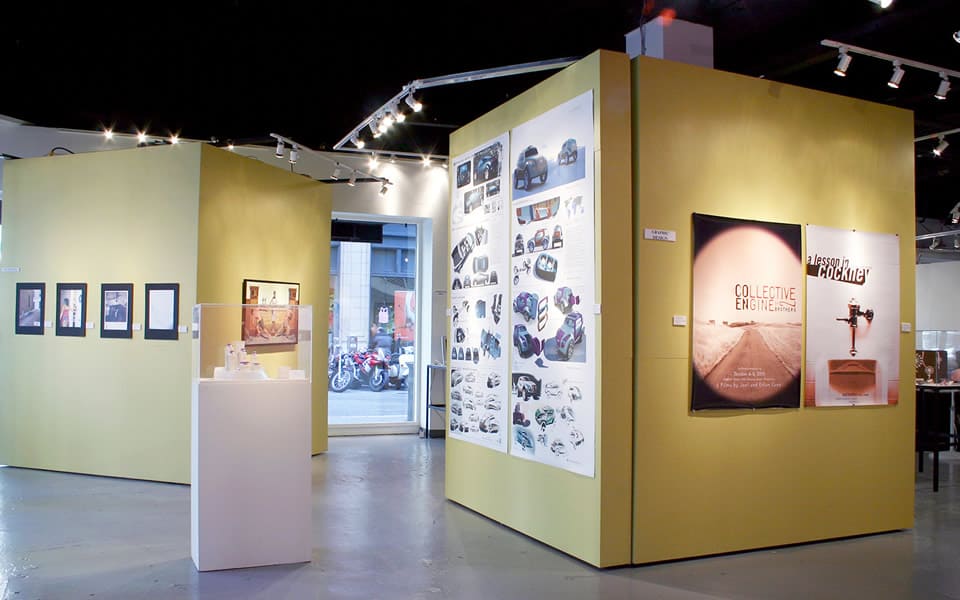 Studying art provides you with numerous opportunities to learn, create and perform. Arts programs have been shown to promote better verbal, reading, and writing skills and higher-ordered thinking skills such as analyzing and problem-solving. Students involved in the visual arts also have the opportunity to participate in various concerts, performances, and exhibits each year.
Studying art provides you with numerous opportunities to learn, create and perform. Arts programs have been shown to promote better verbal, reading, and writing skills and higher-ordered thinking skills such as analyzing and problem-solving. Students involved in the visual arts also have the opportunity to participate in various concerts, performances, and exhibits each year.
You’ll Learn New Skills
Visual development artists (“vis devs”) create the worlds and characters that bring animated films to life. They understand how to set the mood and tone of a movie through composition, thumbnails, lighting, and color. By taking a course in visual development at schools like the Academy of Art University, you’ll learn how to create a style that reflects your personality and voice. You’ll also learn how to critique and receive feedback from others, which is a necessary skill for any creative professional. Studies have shown that learning the arts develops various cognitive skills, including perceptual and higher-order thinking skills. For example, one study found that art class students can better organize their writing and display more sophisticated reading comprehension skills. Other studies have found that the artistic process can help students improve their verbal and mathematical reasoning abilities. Other benefits include learning to observe, envision, and express. Moreover, studying art can teach you how to work through frustration and push yourself past your comfort zone. This can be valuable for any career path.
You’ll Learn How to Think Creatively
Creativity can help you develop innovative solutions to problems at work or school. Creative thinking also allows you to see things from new perspectives, which can build empathy and improve your communication skills. While many people think creativity is a gift they’re either born with or don’t have, it can be developed and improved through regular practice. Challenging yourself with creative exercises is one way to stimulate your creative mind. Try drawing or free writing for short periods—for example, 20 minutes each day—and avoid distractions. You may not produce great art during these sessions, but even a few words or lines can stimulate your ability to think creatively. In addition, try to vary your sources of inspiration. For example, if you typically watch light-hearted sitcoms, branch out to dramas and crime shows. Similarly, try to socialize with a diverse group of people so that you’re exposed to different viewpoints and ideas. Lastly, don’t be afraid to take risks. Putting yourself in nerve-wracking situations can sometimes lead to breakthrough ideas.
You’ll Learn How to Communicate
Whether you’re in visual development (VisCom) or communication and rhetorical studies (CRS), our curriculum balances the “big picture” conceptual courses with hands-on practical skills. You’ll study how ancient philosophers like Plato and Aristotle conceived of persuasion and citizenship, or you’ll learn the best way to create a presentation slide. We also teach you to identify, analyze, and solve meaningful design problems using creativity, critical thinking, and real-world practical projects. You’ll invent beautiful and intelligent design concepts that respond to human needs and improve the quality of business, government, and everyday life. You’ll collaborate with fellow students and professionals in our studios, workshops, and labs, where we provide all the space, tools, and experiences you need to become the designer you aspire to be. You’ll work with letterpresses, laser cutters, virtual reality equipment, photography and bookmaking labs, and even your private art gallery to explore the relationship between conceptual inquiry and practical problem-solving. You’ll need to communicate your ideas, listen to feedback, and take criticism in the name of progress and success.
You’ll Learn How to Work With Others
If you want to work in visual development, you must work closely with other artists and creative people. This is good because it helps you build your skills and learn from the people around you. Plus, it’s a great way to make friends in the industry! Depending on your specialties, you may need to work with a range of different types of professionals. For example, if you’re working on a movie, you might need to work with actors, directors, costume designers, and other crew members. You may also need to work with animators if you’re creating an animated show or film. One of the best ways to get into the field of visual development is to start by focusing on your craft and building a portfolio. Then, find an internship or shadowing opportunity with a studio or company in your chosen area. This will give you hands-on work experience and help you to establish a solid portfolio that showcases your talent. Then, you’ll be ready to begin your career in visual development!






